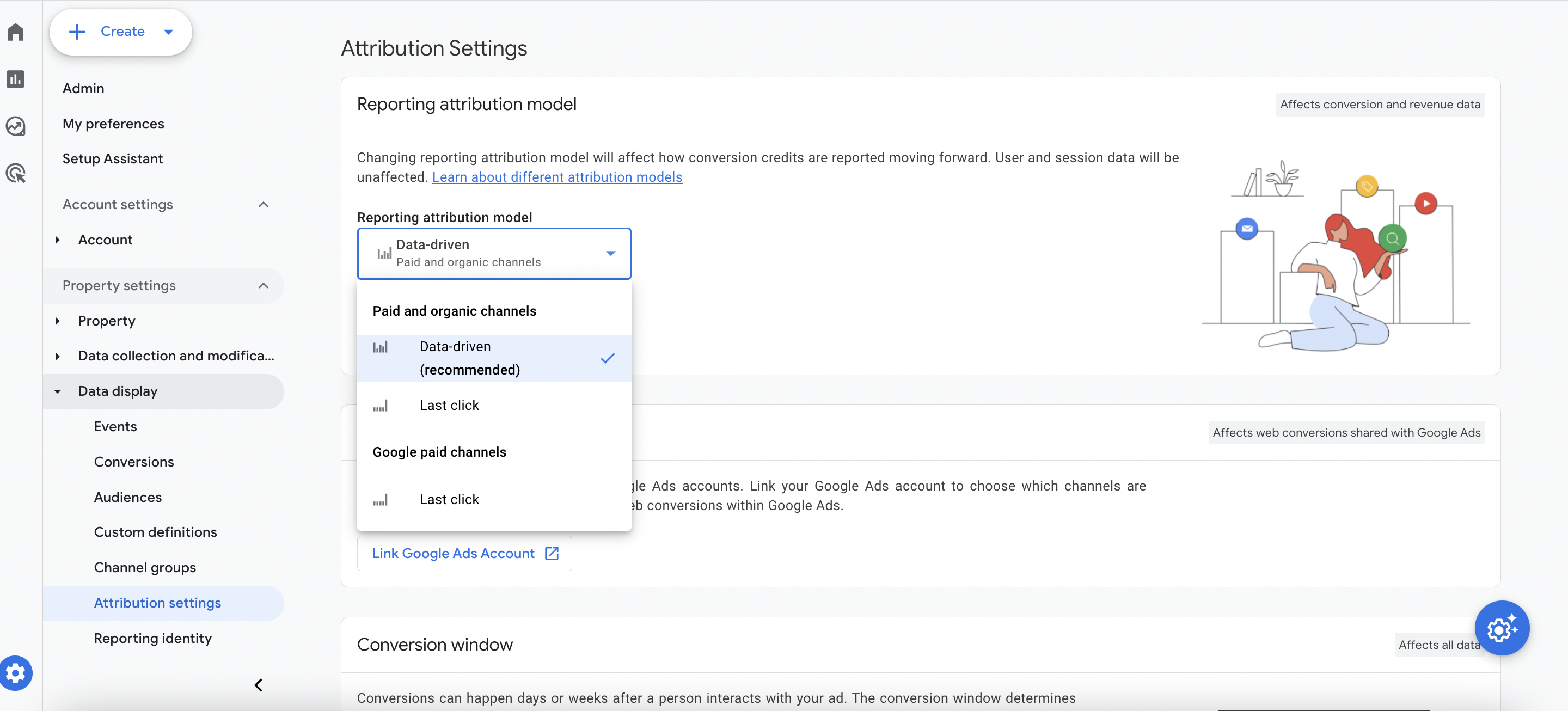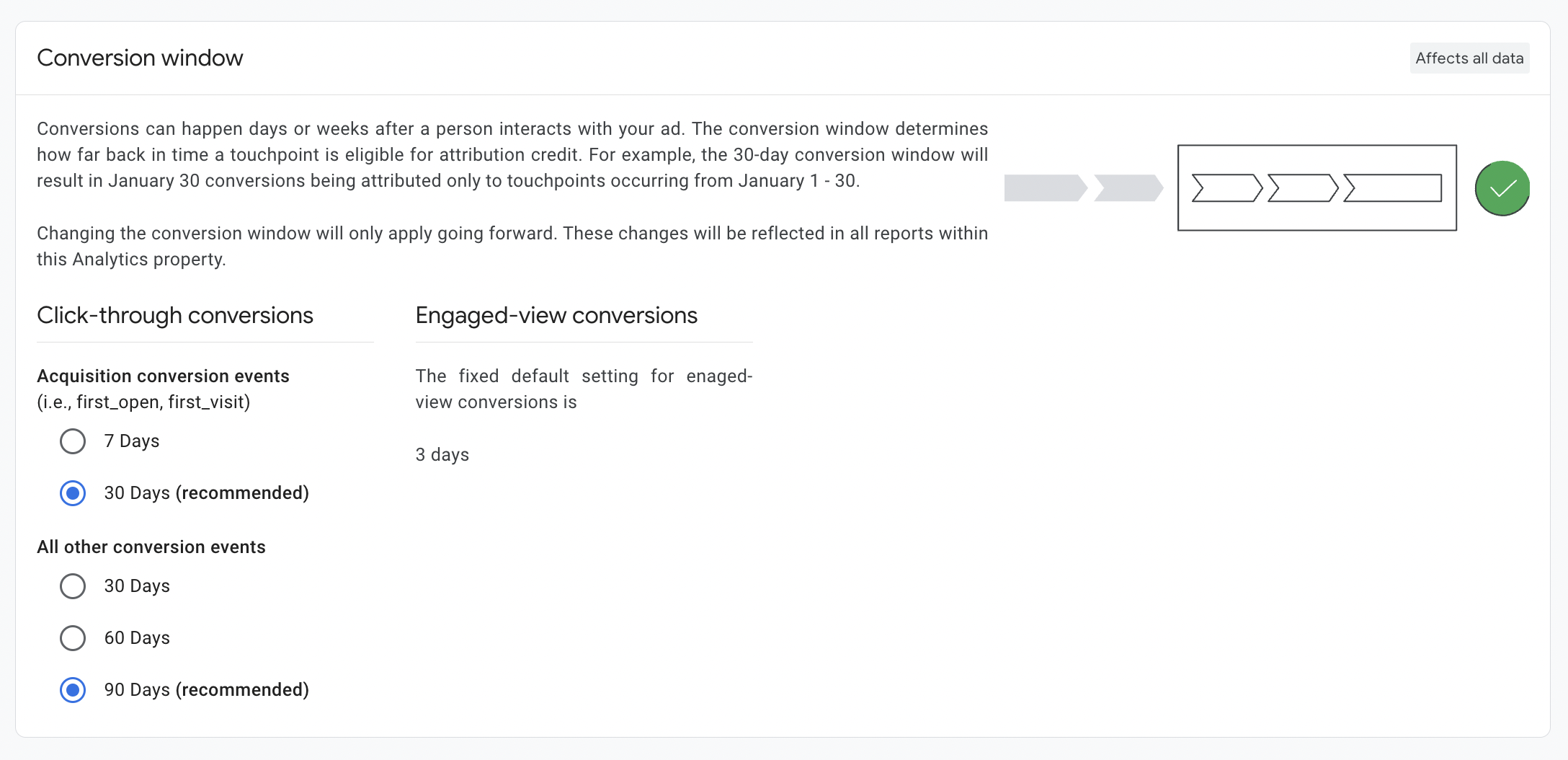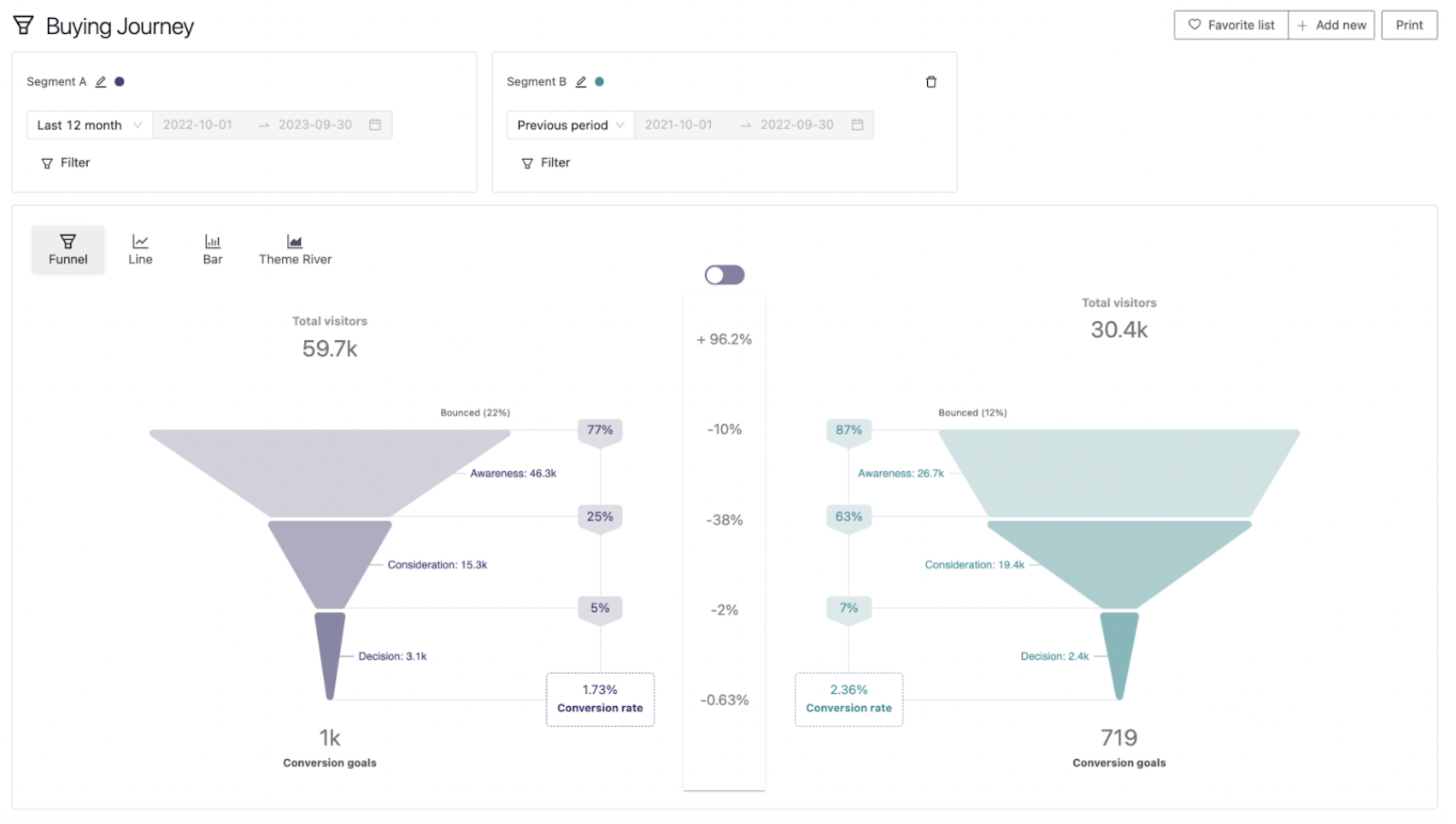
As we move from Universal Analytics to Google Analytics 4 (GA4), marketers now have a powerful tool to understand how users behave on their websites and boost conversions. But, let’s face it – Google Analytics has been a bit obscure when it comes to giving credit for conversions. Given that Google also runs Google Ads, there’s a natural suspicion that things might be biased in their favor.
In this post, we’re going to uncover the real deal behind GA4’s attribution model. We’ll break down how GA4 attribution models actually work and, more importantly, share tips on how to make the most of your marketing touchpoints.
Table of Contents
Understanding GA4 Attribution
The switch to GA4 has marked a new era of website analytics. GA4 represents a significant evolution, offering marketers and analysts a more robust toolkit to gain deeper insights into user behavior. This shift is not merely an update but a fundamental change in how we approach and understand the data generated by our websites.
In GA4, we say goodbye to the familiar -and largely outdated- first click, linear, time decay, and position-based attribution models. These traditional models often oversimplified the customer journey, attributing success solely to the first or last interaction. GA4, on the other hand, embraces a more nuanced approach, distributing credit across multiple touchpoints to provide a comprehensive understanding of user interactions.
GA4 introduces a cutting-edge feature with machine learning-powered attribution models. This innovative approach employs advanced algorithms to analyze patterns and behaviors, adapting dynamically to the uniqueness of each user journey. By learning from historical data, GA4’s machine learning models offer more accurate insights into the impact of each touchpoint on the conversion process.
Key Concepts in GA4 Attribution
Events and Conversions
At the core of GA4 attribution are Events and Conversions. Events are user interactions with content that can be tracked, such as clicks, pageviews, or video views. Conversions, on the other hand, represent the desired outcomes, like a completed purchase or a form submission. Understanding how GA4 tracks these Events and Conversions is pivotal to unraveling user engagement and conversion patterns.
User-Centric Measurement
GA4 adopts a user-centric measurement approach, shifting the focus from individual sessions to a more holistic view of user interactions. This paradigm change allows marketers to understand how users engage with their website across multiple visits, providing a more comprehensive overview of the customer journey.
Types of GA4 Attribution Models
These are the attribution models that Google is applying on GA4.
Data-Driven Attribution: Decoding User Paths with Machine Learning
Data-driven attribution in GA4 leverages machine learning algorithms to distribute credit for conversions based on individual advertiser and conversion event data. Unlike traditional models, it dynamically considers various touchpoints on the conversion path and assigns credit based on their actual contributions.
Methodology of data-driven attribution:
- Analyzing path data to develop conversion rate models.
- Using conversion rate model predictions to attribute conversion credit to different interactions.
The model incorporates factors such as time from conversion, device type, ad interactions, order of exposure, and creative assets. Through a counterfactual approach, it determines the likelihood of each touchpoint driving conversions and attributes credit accordingly.
Suppose a user’s journey involves paid search, social, affiliate, and search ads. The data-driven model evaluates the combination’s impact, attributing credit based on the observed conversion probability changes when each ad interaction is added or removed.
Paid and Organic Last Click: Simplifying Attribution to the Final Interaction
This model assigns 100% of the conversion value to the last channel that the customer clicked through before converting. It deliberately ignores direct traffic and provides a clear, straightforward approach to credit assignment.
Examples:
- If the conversion path is Display > Paid Search > Social > Organic Search, 100% of the credit goes to Organic Search.
- Display > Social > Paid Search > Email results in 100% credit to Email.
- Social > Display > Paid Search > Direct → 100% to Paid Search
This is the same as the previously used Last non-direct click model.
Google Paid Channels Last Click: Focusing on Google Ads Impact
Google paid channels last click attributes 100% of the conversion value to the last Google Ads channel that the customer interacted with before converting. In cases where there’s no Google Ads click in the path, it defaults to the Paid and Organic Last Click model.
Examples:
For a path like Display > Social > Paid Search > Organic Search, 100% credit goes to Paid Search.
If the journey is Display > Social > YouTube EVC > Email, 100% credit is attributed to YouTube.
This inherent bias raises questions about the reliability of using Google as a source for web analytics, as it consistently skews results in favor of its proprietary channels.
How to Change GA4 Attribution Model?

To change your GA4 attribution model, you will need to have Editor role on the property. To access this setting, navigate to Admin > Data Display > Attribution setting.
Here you can also select the conversion window of your marketing touchpoints eligible for attribution.

Optimizing Touchpoints for Conversions in GA4
Understanding the user journey and leveraging GA4 attribution models can be transformative for enhancing your overall marketing strategy. At the end of the day, every interaction a user has with your brand is an opportunity to influence their decision-making process.
However, optimizing touchpoints in GA4 can be a challenging task, and marketers often grapple with several common challenges when utilizing this platform for attribution:
- Attribution inconsistencies: Attributing conversions accurately is crucial for understanding the effectiveness of marketing channels and campaigns. GA4’s attribution models, while powerful, may face challenges in precisely assigning credit to each touchpoint as we just mentioned above. This inconsistency can hinder marketers’ ability to make informed decisions..
- Learning curve: The transition from Universal Analytics to GA4 introduces a learning curve for marketers. Navigating the new interface and understanding the changes in attribution models may take time, impacting the efficiency of touchpoint optimization efforts.
- Data overload: GA4, with its extensive tracking capabilities, may generate a significant amount of data. Marketers may face the challenge of data overload, making it difficult to extract actionable insights and identify the most impactful touchpoints in the user journey.
- Lack of unified source of truth: Integrating data from various sources in GA4 may result in inconsistencies and inefficiencies. Without a centralized platform for comprehensive conversion funnel analysis, marketers may struggle to maintain a unified source of truth for attribution insights.
- Privacy compliance: As privacy regulations evolve, ensuring compliance becomes paramount. Google is making some changes in this area, but we all now that its privacy standards are not renowned. Marketers must be vigilant, supplementing GA4 with privacy-focused tools. Proactive measures and staying informed about privacy regulations are essential for prioritizing user data protection while optimizing touchpoints for conversions
How to Solve Attribution Challenges with Pathmonk Intelligence
Navigating the complex landscape of attribution headaches requires an independent approach, and this is where Pathmonk Intelligence comes into play.
Pathmonk Intelligence is a machine learning-powered software for website analytics, that operates without cookies. Unlike traditional analytics platforms, it offers a comprehensive view of your users’ full customer journey, so you get transparent data on your conversions. This feature ensures precise attribution data, enabling marketers to pinpoint the true impact of each touchpoint on conversions.

The model operates without relying on cookies for tracking user behavior. This is especially advantageous in an environment where privacy concerns and cookie restrictions are becoming more prevalent. Cookie-free conversion tracking enhances user privacy and comply with evolving data protection regulations.
Understand your customer journey analytics
See how your users behave, find drop-offs, and receive actionable insights with AI.

Technical Workflow: Understanding How Pathmonk Intelligence Works
- Add in seconds
Pathmonk Intelligence simplifies the integration process with its plug-and-play solution. Adding Pathmonk to your website takes mere seconds. Once integrated, the engine automatically starts compiling data to understand each user’s behavior and construct intention models.
- Analyze in real time
The technology operates in real-time, continuously analyzing user interactions on your website. It identifies actions and patterns without relying on cookies. This ensures a dynamic and cookie-free approach to comprehending user behavior and engagement.
- Get powerful insights to drive conversions:
Pathmonk Intelligence aggregates data from all your marketing channels, offering a unified and centralized source of truth. Its AI-driven capabilities handle complex mathematical computations in the background. Marketers gain powerful insights that go beyond conventional analytics, empowering them to make data-driven decisions and optimize touchpoints for increased conversions.
Conclusion: GA4 Attribution Model is Better… But Not the Best
The adoption of the GA4 arepresents a noteworthy improvement in the world of website analytics, offering marketers a more sophisticated toolkit and a departure from traditional attribution models. The introduction of machine learning-powered data-driven attribution model brings a dynamic and nuanced approach to credit distribution across multiple touchpoints, providing a deeper understanding of user interactions.
However, it’s essential to acknowledge that while GA4 brings significant advancements, marketers still face challenges such as attribution inconsistencies, a learning curve, data overload, and the ever-growing importance of privacy compliance.
As the industry continues to evolve, businesses may find that innovative solutions like Pathmonk Intelligence, which offers a cookie-free tracking approach and a comprehensive view of the customer journey, can lead to a more robust and tailored approach to attribution.





